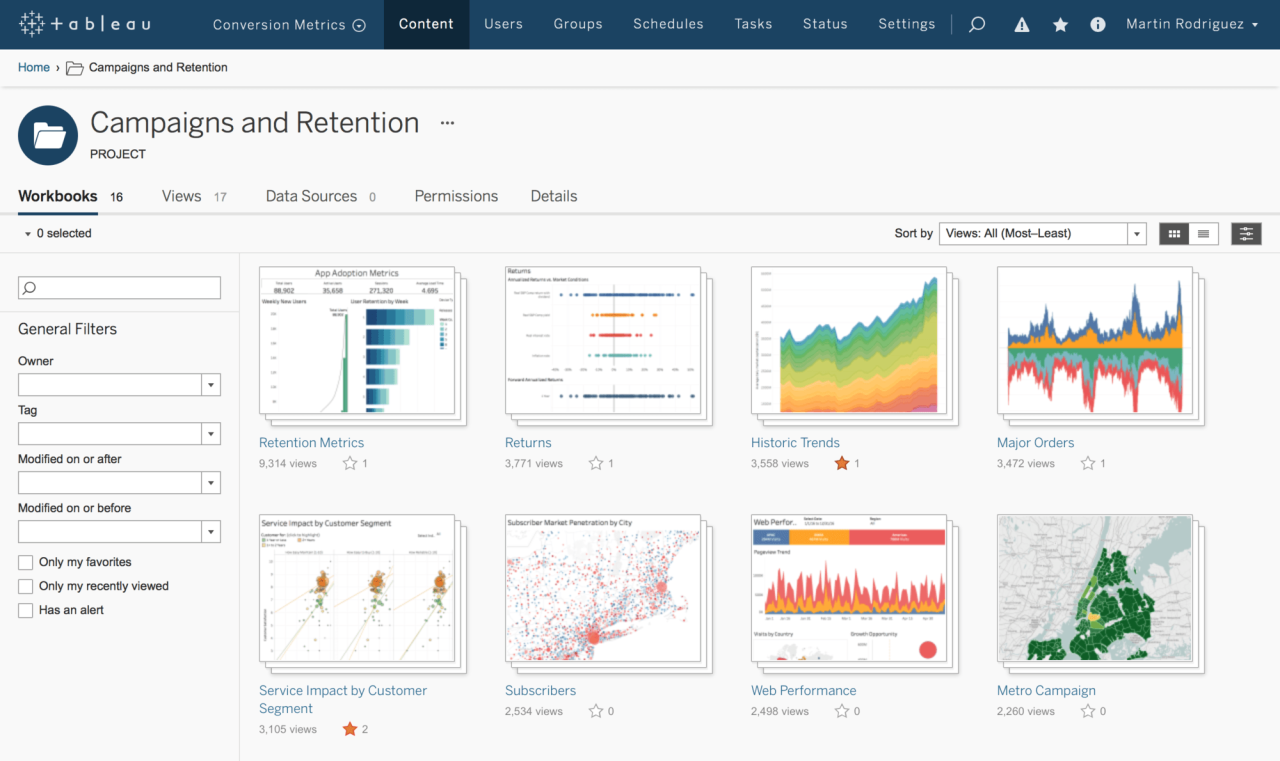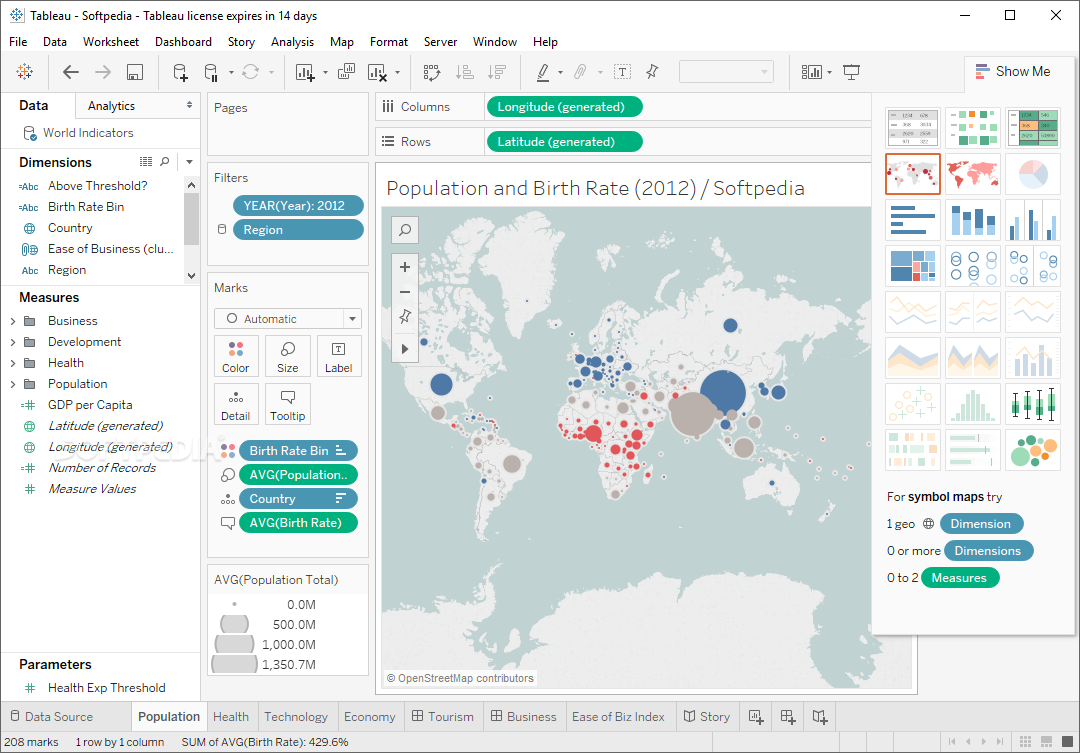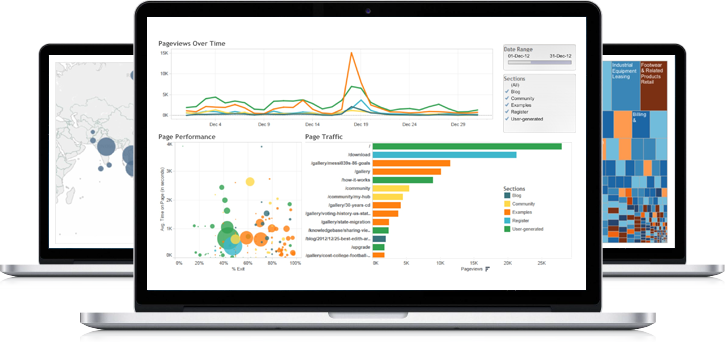Tableau Desktop is a powerful data visualization tool that empowers users to transform raw data into insightful and engaging visuals. It’s a user-friendly platform designed for both business professionals and data analysts, enabling them to explore data, create interactive dashboards, and share their findings effectively.
Table of Contents
Tableau Desktop has gained widespread popularity for its intuitive drag-and-drop interface, a wide range of visualization options, and seamless integration with various data sources. Its ability to connect to diverse data formats, including spreadsheets, databases, and cloud-based platforms, makes it a versatile tool for data exploration and analysis across various industries.
Data Preparation and Connection: Tableau Desktop

Data preparation is a crucial step in the Tableau Desktop workflow. It involves connecting to data sources, cleaning, and transforming data to ensure accuracy and suitability for analysis and visualization.
Connecting to Data Sources
Connecting to data sources is the first step in the data preparation process. Tableau Desktop offers a wide range of connectors for various data types, including:
- Relational Databases: Tableau can connect to popular relational database management systems (RDBMS) like MySQL, PostgreSQL, SQL Server, and Oracle. These connections allow users to access structured data stored in tables with defined relationships.
- Spreadsheets: Tableau supports connections to spreadsheets created in Microsoft Excel, Google Sheets, and other spreadsheet applications. This enables users to analyze data directly from their existing spreadsheets.
- Cloud Data Sources: Tableau can connect to cloud-based data sources like Amazon Redshift, Google BigQuery, and Snowflake. This allows users to analyze data stored in the cloud without the need for local data storage.
- Text Files: Tableau can read and analyze data from text files like CSV, TSV, and TXT files. This is useful for analyzing data that is not stored in a structured format.
- Other Data Sources: Tableau supports connections to other data sources, including JSON files, XML files, and web data sources.
Data Cleaning and Transformation
Once data is connected to Tableau Desktop, it may require cleaning and transformation to ensure accuracy and consistency. Tableau offers several built-in features for data preparation, including:
- Data Cleaning: Tableau can identify and handle missing values, duplicates, and outliers. Users can replace missing values with calculated values, remove duplicates, and filter out outliers to improve data quality.
- Data Transformation: Tableau allows users to transform data by performing operations like calculations, aggregations, and data blending. This can involve creating new fields, aggregating data, and combining data from multiple sources.
- Data Blending: Tableau allows users to blend data from multiple sources by joining them based on common fields. This enables users to analyze data from different sources together, providing a more comprehensive view.
Data Preparation Techniques
The specific data preparation techniques used will depend on the type of data being analyzed. Here are some examples of data preparation techniques for different data types:
- Numerical Data: For numerical data, common data preparation techniques include handling missing values, outlier detection, and normalization. Missing values can be replaced with the mean, median, or mode of the data. Outliers can be identified using statistical methods like the Z-score or box plot. Normalization can be used to scale data to a common range.
- Categorical Data: For categorical data, common data preparation techniques include cleaning inconsistent values, creating dummy variables, and grouping categories. Inconsistent values can be corrected or removed. Dummy variables can be created to represent categorical values as binary variables. Categories can be grouped to reduce the number of unique categories.
- Text Data: For text data, common data preparation techniques include cleaning text, tokenization, and stemming. Cleaning text involves removing punctuation, stop words, and other irrelevant characters. Tokenization involves splitting text into individual words or phrases. Stemming involves reducing words to their root form.
Data Analysis and Exploration

Data analysis and exploration are crucial steps in the Tableau Desktop workflow. It involves using various techniques to uncover insights, patterns, and trends hidden within your data. Tableau provides powerful tools that enable you to perform complex analysis with ease.
Filters, Tableau desktop
Filters are essential for narrowing down your data to specific subsets, allowing you to focus on relevant information. You can create filters based on various criteria, such as:
- Dimensions: Filtering data based on categorical values like region, product category, or customer segment.
- Measures: Filtering data based on numerical values like sales, profit, or quantity.
- Date and Time: Filtering data based on specific dates, time periods, or intervals.
Filters can be applied to your data in various ways, such as:
- Quick Filters: Drag and drop fields onto the filter shelf, allowing you to quickly select values.
- Context Filters: Apply filters to specific parts of your view, such as a specific chart or table.
- Advanced Filters: Use custom formulas and conditions to create more complex filters.
Calculations
Calculations allow you to create new fields or modify existing ones based on specific formulas. These calculations can be used to:
- Create derived measures: Calculate new metrics like profit margin, growth rate, or average order value.
- Perform data transformations: Convert data types, aggregate data, or create custom groupings.
- Implement conditional logic: Apply different calculations based on specific conditions.
Tableau offers various calculation functions, including:
- Mathematical functions: Perform basic arithmetic operations, such as addition, subtraction, multiplication, and division.
- String functions: Manipulate text data, such as extracting substrings, converting cases, or replacing characters.
- Date and time functions: Calculate date differences, extract date components, or format dates.
- Logical functions: Implement conditional logic using functions like IF, THEN, ELSE, and CASE.
Parameters
Parameters are variables that allow you to control the behavior of your visualizations without modifying the underlying data. This flexibility is useful for:
- Creating interactive dashboards: Allow users to adjust parameters and see the impact on the data.
- Performing sensitivity analysis: Explore how different parameter values affect the results of your analysis.
- Implementing dynamic filters: Use parameters to create filters that change based on user input.
You can create parameters for various data types, including:
- Number: Control numerical values, such as sales targets or discount rates.
- String: Control text values, such as product categories or customer names.
- Date: Control date values, such as start and end dates for a specific time period.
Scenario: Analyzing Sales Performance
Imagine you are a sales manager analyzing your team’s performance. You want to understand how different regions are performing and identify any potential areas for improvement. You can use Tableau to:
- Create a map visualization: Show the sales performance of each region visually.
- Apply filters: Focus on specific regions or time periods to compare performance.
- Calculate metrics: Determine average sales per region, sales growth rate, or customer acquisition cost.
- Use parameters: Allow users to adjust the sales target and see how it affects the performance metrics.
By using these techniques, you can gain valuable insights into your team’s performance and identify areas where you can focus your efforts to improve sales.
Learning Resources and Community

Mastering Tableau Desktop requires dedication and a structured learning approach. The vast Tableau community offers numerous resources and support to aid your journey.
Online Courses and Tutorials
Tableau offers a comprehensive set of online courses and tutorials designed to cater to different learning styles and skill levels. These resources cover various aspects of Tableau, from fundamental concepts to advanced techniques.
- Tableau Desktop I: Fundamentals: This course introduces the core functionalities of Tableau Desktop, including data connection, visualization, and data analysis. It’s ideal for beginners.
- Tableau Desktop II: Intermediate: This course builds upon the fundamentals, exploring advanced features like calculated fields, parameters, and dashboards.
- Tableau Desktop III: Advanced: This course delves into complex topics like data blending, advanced formatting, and data storytelling. It’s suitable for users seeking to master Tableau’s capabilities.
Tableau Community
The Tableau community is a vibrant platform where users can connect, share knowledge, and seek assistance. It’s a valuable resource for learning and problem-solving.
- Forums: The Tableau Community Forums are a bustling hub for asking questions, sharing solutions, and engaging in discussions with fellow users.
- Knowledge Base: The Tableau Knowledge Base provides a vast collection of articles, tutorials, and documentation on various Tableau topics.
- User Groups: Tableau User Groups are local meetups where users can connect, learn from each other, and share best practices.
Concluding Remarks
Whether you’re a seasoned data scientist or a business leader seeking data-driven insights, Tableau Desktop provides a comprehensive solution for data visualization and analysis. Its user-friendly interface, extensive features, and powerful capabilities make it an invaluable tool for unlocking the potential of data and driving informed decision-making.
Tableau Desktop is a powerful tool for data visualization, allowing you to create insightful dashboards and reports. It’s especially useful for understanding complex financial data, much like how Intuit TurboTax helps individuals navigate their tax returns. While TurboTax focuses on personal finances, Tableau Desktop can be used to analyze financial data on a much larger scale, helping businesses and organizations make informed decisions.
